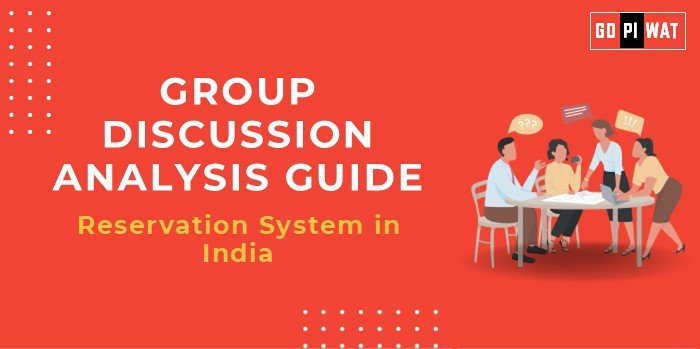📋 Group Discussion Guide: Reservation System in India – Should it Continue?
🌐 Introduction to the Reservation System in India
The reservation system in India is a form of affirmative action designed to uplift historically marginalized communities,
including Scheduled Castes (SC), Scheduled Tribes (ST), and Other Backward Classes (OBC). Established in post-independence India,
the system seeks to promote equality and address socio-economic disparities. Given India’s evolving socio-economic landscape,
questions arise regarding the relevance and structure of reservations in modern India, especially in education, employment,
and political representation.
📊 Quick Facts and Key Statistics
🧮 Quota Breakdown: 15% for SCs, 7.5% for STs, and up to 27% for OBCs in government institutions and public sector jobs.
🌍 OBC Population: Over 40% of India’s population, highlighting the necessity of reservation policies.
🎓 Educational Impact: Reserved seats in higher education institutions have significantly increased enrollment among marginalized groups.
💰 Income Disparity: Average per capita income for SC/ST/OBC groups still lags behind the general population.
🔍 Stakeholders and Their Roles
- 🏛️ Government: Formulates and enforces reservation policies across various sectors.
- 🎓 Educational Institutions: Implement quotas in admissions and provide scholarships for disadvantaged communities.
- 🏢 Private Sector: Debates are ongoing about extending reservation policies to private companies for greater inclusivity.
- 🤝 Marginalized Communities: Benefit from reservations but face challenges such as intra-group disparities.
- 🧑🤝🧑 General Population: Opinions vary, with debates on meritocracy, fairness, and socio-economic impacts.
🏆 Achievements and ⚠️ Challenges
“While the reservation system has empowered many, it continues to face criticism and demands for reform.”
✨ Achievements:
- 🎓 Increased Education Access: SC/ST enrollments in higher education have risen by over 20% in recent years.
- 🗳️ Political Representation: Reserved seats in parliament have led to greater inclusivity.
- 📈 Economic Progress: Many reserved category individuals have achieved upward mobility in government sectors.
⚠️ Challenges:
- 💰 Economic Disparity: Persistent income gaps within reserved groups, especially in rural areas.
- 🎓 Meritocracy Debate: Concerns about the impact on merit-based admissions and recruitment.
- 🌍 Global Comparisons: India’s quota-based system differs from affirmative action in countries like the U.S.
🤔 Structured Arguments for Discussion
Supporting Stance: “The reservation system is essential for promoting equality and redressing historical injustices against marginalized communities.”
Opposing Stance: “Reservation policies can undermine meritocracy and discourage competition; periodic reviews are needed.”
Balanced Perspective: “While reservations have empowered many, the policy must adapt to address current socio-economic challenges.”
💡 Effective Discussion Approaches
Opening Approaches:
- 📜 Historical Context: “The reservation system, rooted in India’s independence movement, aimed to create equal opportunities for marginalized groups. Is it still relevant today?”
- 📊 Statistical Opening: “With 40% of India’s population identifying as OBC, the need for inclusivity remains significant.”
Counter-Argument Handling:
- 🔍 Highlight persistent disparities despite decades of reservations.
- 📖 Cite examples from states that have balanced merit and reservation effectively.
🌟 Strategic Analysis of Strengths and Weaknesses
- ✅ Strengths: Promotes social equality and increases representation in education and politics.
- ❌ Weaknesses: May hinder meritocracy and cause resentment among non-reserved groups.
- 📈 Opportunities: Adapt policies to current socio-economic conditions and focus on economic criteria.
- ⚠️ Threats: Intra-group inequality and overemphasis on caste-based identities.
📚 Connecting with B-School Applications
- 🌏 Real-World Applications: Reservation policies can inspire diversity initiatives in organizations.
- ❓ Sample Interview Questions:
- 💼 “How would you balance diversity and merit in a large organization?”
- 🏢 “What are your views on extending reservations to private sectors?”
- 📖 Insights for B-School Students: Study global affirmative action models, think critically about workplace diversity, and analyze socio-economic impacts.


